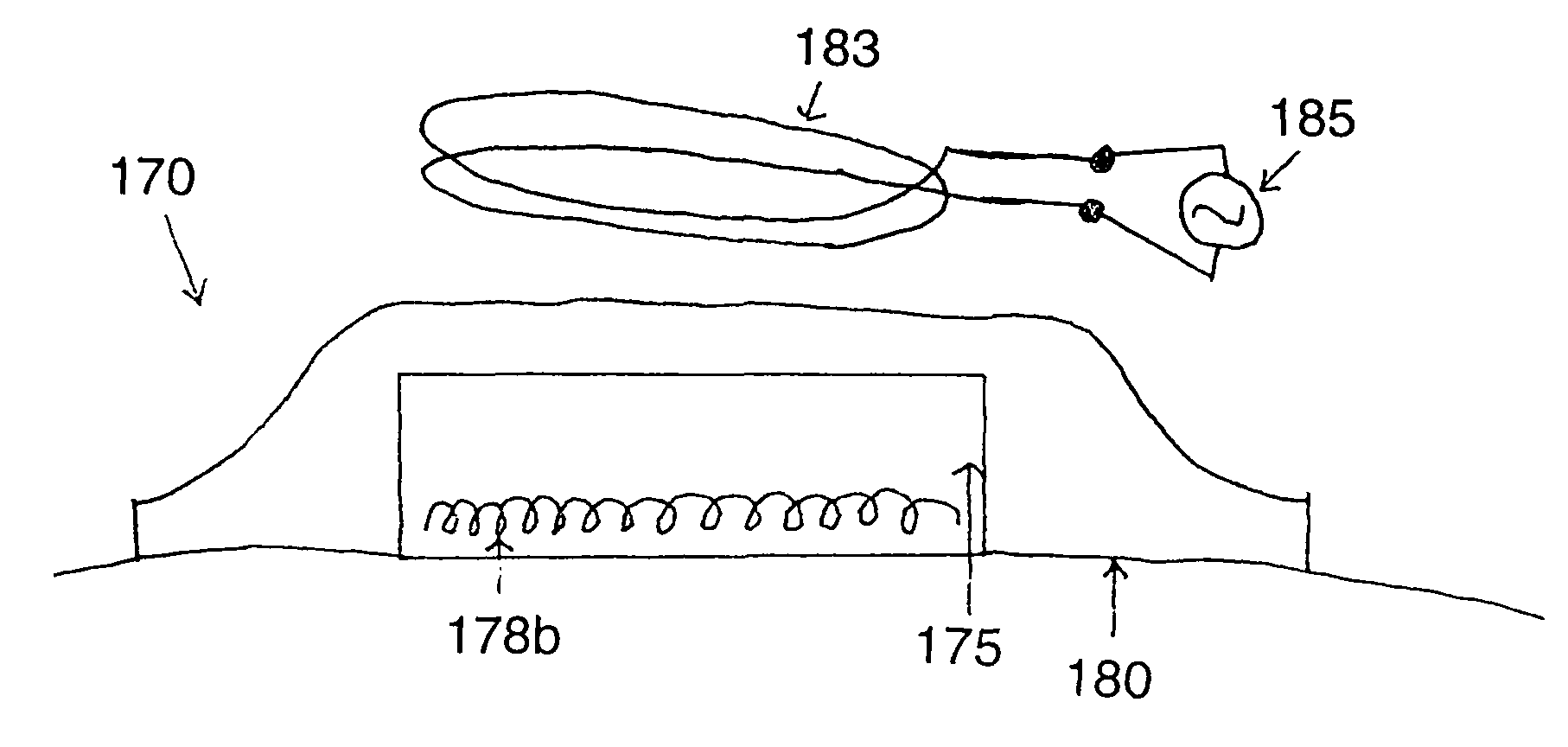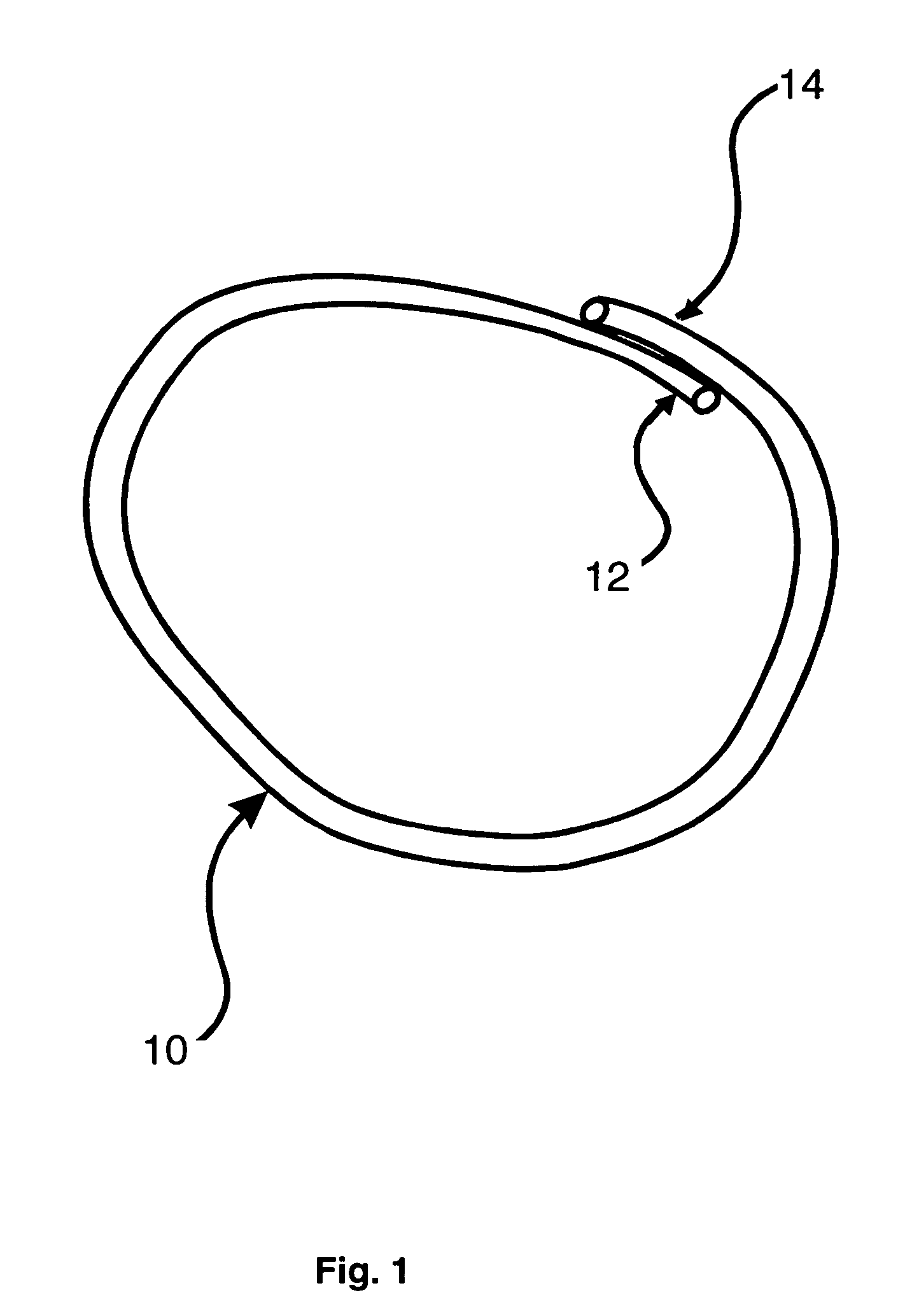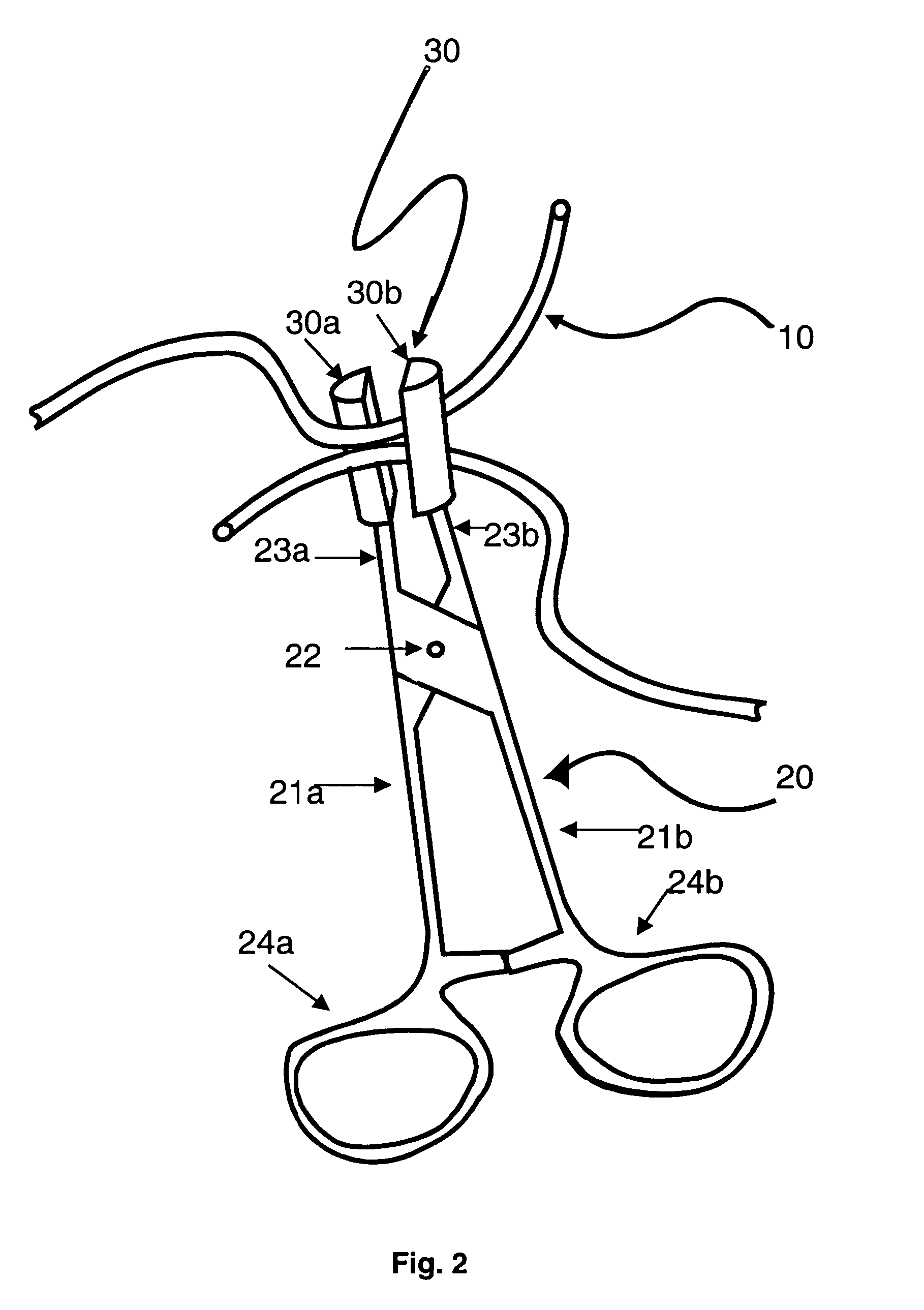Electromagnetic treatment of tissues and cells
a tissue and cell technology, applied in the field of biomedical engineering, biochemistry and medical treatment and surgical procedures, can solve the problems of affecting the healing process, and affecting the healing effect of the patient, so as to achieve the effect of convenient application
- Summary
- Abstract
- Description
- Claims
- Application Information
AI Technical Summary
Benefits of technology
Problems solved by technology
Method used
Image
Examples
example 1
Heating of Test Metal
[0317]The prototype activator device was constructed (Quest Product Development, Evergeen, Colo.) and operates at a frequency of about 650 kHz with an output of approximately 210 W. At or near this frequency, the skin depth in tissue, e.g., canine skeletal muscle at 1 MHz, (Francis Duck. Physical Properties of Tissue—A comprehensive reference book. Academic Press: NY, 1990) is about 205 cm and for nickel it is about 14 microns. Thus, no significant heating of tissue occurs as a direct result of the field. Heating only occurs in close proximity to the fusion composition.
[0318]Two applicator designs were used and comprised 200 turns of solid copper wire, 32 and 22 G, resulting in a coil approximately 2.86 cm in diameter and 0.95 cm in width. The bore of the coil was about 0.5 cm. The coils were encapsulated in a Pyrex sleeve through which low-viscosity mineral oil (Sigma-Aldrich Inc., St. Louis, Mo.) is circulated as a coolant. In each of these coils, the magnetic...
example 2
Heating and Coagulating of Test Fusion Formulation
[0321]Fusion formulations were made of 50-75% (w / v) bovine serum albumin or ovalbumin (Sigma-Aldrich, St. Louis, Mo.) in saline with a metal additive of 5% or 10% (w / v) nickel flake with average particle size of about 50 micron (Alfa Aesar, Ward Hill, Mass.) or 10% iron filings with particle size <30 microns (Edmund Scientific, Tonawanda, N.Y.). Approximately 1 ml aliquots of the fusion composition were positioned in thin-walled glass tubes with a diameter of about 4 mm. The tube was positioned in the bore of the applicator. The device was energized for a period of 20-30 seconds. Evidence of denaturation and coagulation was ascertained visually, as the material changed color. This was confirmed by probing the composition with a needle which demonstrated evidence of increased viscosity or stiffness. The composition coagulated with all combinations of applicator and composition. Compositions with more metal or iron versus nickel heated...
example 3
Protein Denaturation
[0322]A radiofrequency electromagnetic device, operating at 650 kHz, was constructed. Near this frequency, the skin depth in tissue, using conductivity values for canine skeletal muscle at 1 MHz, is about 205 cm, while for nickel, it is 14 μm. Two solenoid type coils were constructed using 20 G solid copper wire. The coils were encapsulated in a Pyrex sleeve through which low-viscosity mineral oil is circulated as a coolant. Two coils had 200 turns of solid copper wire, formed into a solenoid, with a diameter of 2.86 cm and width of 0.95 cm. The magnetic intensity within the bore of the coil was calculated to be greater than 100 kA / m, while at approximately 0.5 cm from a single coil face the intensity is calculated to be maximally 0.15 kA / m. Two coils were electronically connected to the radiofrequency power supply and physically arranged with the bore axis parallel and opposing each other with a gap of about 2 cm between the faces of the coils.
[0323]The reactant...
PUM
| Property | Measurement | Unit |
|---|---|---|
| frequency | aaaaa | aaaaa |
| skin depth | aaaaa | aaaaa |
| skin depth | aaaaa | aaaaa |
Abstract
Description
Claims
Application Information
 Login to View More
Login to View More - R&D
- Intellectual Property
- Life Sciences
- Materials
- Tech Scout
- Unparalleled Data Quality
- Higher Quality Content
- 60% Fewer Hallucinations
Browse by: Latest US Patents, China's latest patents, Technical Efficacy Thesaurus, Application Domain, Technology Topic, Popular Technical Reports.
© 2025 PatSnap. All rights reserved.Legal|Privacy policy|Modern Slavery Act Transparency Statement|Sitemap|About US| Contact US: help@patsnap.com



